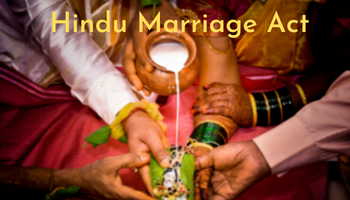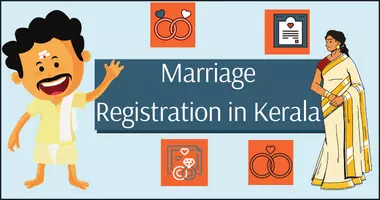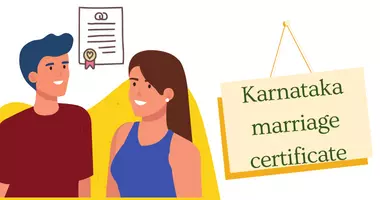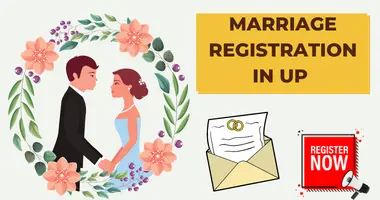Are you looking for a comprehensive guide to the Hindu Marriage Act 1955? This blog post will cover everything from the purpose and salient features of the Act to the eligibility criteria and registration process for marriage.
The Hindu Marriage Act 1955 is a landmark legislation that has played a significant role in shaping the institution of marriage in India. It has provided a uniform legal framework for all Hindus, irrespective of their caste, creed, or community.
This blog post will provide you with a clear and concise overview of the Hindu Marriage Act 1955. You will learn about the key provisions of the Act, as well as your rights and obligations as a spouse under the law.
Learn about your legal rights and responsibilities under the Hindu Marriage Act of 1955 if you are getting married, already married, or getting divorced. This blog post will provide you with the information you need to make informed decisions about your marriage and future.
Read this blog post today to learn more about the Hindu Marriage Act of 1955 and how it affects you.
Purpose of the Hindu Marriage Act 1955
The Hindu Marriage Act’s primary goal was to update and codify the existing laws governing marriage between Hindus. The law added divorce and judicial separation to Sastrik Law, and also changed and organized Sastrik Law. The law became uniform for all Hindu communities because of its enactment.
Salient Features of the Act
- Forbids bigamy: Section 5 of the Act lays down that it is illegal to have two living wives at once, which is also known as bigamy.
- Marriageable age prescribed: As per Section 5 (iii) of the Act, the groom must be at least 21 years old and the bride must be at least 18 years old during the time of marriage.
- Restitution of conjugal rights: The restitution of conjugal rights is stated in Section 9 of the 1955 Act. Restitution of conjugal rights refers to the right of a couple to cohabitate. The main motive behind Section 9 is that a spouse has the right to live together in order to safeguard their union and preserve its sanctity.
- Focus on the mental stability of the parties getting hitched: A person’s marriage will be null and void if they were mentally unfit when they were married.
- Providing significance to ceremonies involved in marriage: The Hindu Marriage Act dictates that if two Hindu people get married using the conventional rituals and rights, their marriage is lawful.
Applicability of the Hindu Marriage Act 1955
This Act applies to any person: —
- who is a Hindu by religion in any of its forms, including a Virashaiva, a Lingayat.
- Who follows the Brahmo, Prarthana or Arya Samaj,
(c) who is a Sikh, Buddhist or Jain
(d) The law applies to people who live in the states where it is in effect, who are not Muslim, Christian, Parsi, or Jewish, unless it can be shown that they would not have been governed by Hindu law, tradition, or custom.
Eligibility criterion to marry under the Hindu Marriage Act 1955
Two Hindus can get married if the following criteria are met:
- neither the bride nor groom has a spouse living at the time of the marriage;
- at the time of the marriage, neither the bridge nor the groom:—
(a) is incapable of giving valid consent due to an unsound mind;
(b)Has a mental illness that makes them unfit for marriage and having children, even though they can give consent.
(c) Has been subject to repeated attacks of insanity
(iii) The bridegroom has attained the age of 21 and the bride, the age of 18 at the time of the marriage.
(iv) The parties are not within the degrees of prohibited relationship unless a custom of their community that governs each of them allows for such a marriage.
(v) The parties are not sapindas of each other unless a custom of their community that governs each of them allows for such a marriage.
Marriage Registration under the Hindu Marriage Act 1955
You can register your marriage at the Sub-registrar office in your area. You can apply for marriage online on your state’s portal and choose a day to register your marriage at the registry office. Just needs to carry your documents, wedding card, and 3 other witnesses to complete the registration procedure.
Section 8 of the Hindu Marriage Act 1955 lays down that the marriage be instantly recorded by the Registrar of Marriage on the same working day in the Hindu Marriage Register. On the day of your appointment, the registrar will verify all documents and register your marriage. The next working day, you will receive a marriage certificate.
Divorce under the Hindu Marriage Act 1955
The Hindu Marriage Act of 1955 was the first ever Hindu law to allow for a divorce.
Nullity and Voidable Marriages
The Act states that some marriages are null and void under Sections 11 and 12 if they do not meet the legal requirements for a valid marriage or have the flaws listed in Section 12.
Judicial Separation
Judicial Separation is the pre-divorce phase and the law states that any one of the parties may petition for judicial separation on valid grounds or reasons detrimental for a divorce. If the court approves the judicial separation, the parties will no longer have to live together.
Divorce
Section 13 of the Hindu Marriage Act 1955 states nine reasons for a divorce. Some of them are adultery, desertion, cruelty, insanity, leprosy, venereal disease, conversion to another religion or rejection of the world. They are referred to as divorce fault grounds. Either the bride or the groom must establish at least one legal reason for divorce in order to receive a divorce decree.
Section 13(B) of the Marriage Laws (Amendment) Act of 1976 allows divorce by mutual consent. It gives the bride and the groom to file for divorce without having to establish blame any party. A petition for divorce may be presented to the District court by the bride and the groom, on the ground that they have been living separately for one year. The couple has also not been able to cohabitate and they have mutually agreed upon the dissolution of their marriage.
FAQs
Q1: What are the main points of Hindu Marriage Act, 1955?
A: The Hindu Marriage Act, 1955 provides a uniform code for the solemnization of marriage between Hindus and for dissolution of Hindu marriages.
Q2: What is the new marriage Act of 1955?
A: The Hindu Marriage Act, 1955 is the new marriage act for Hindus in India. It replaced the various Hindu personal laws and customary laws that were previously in effect.
Q3: What are the forms of marriage under Hindu Marriage Act, 1955?
A: The Hindu Marriage Act, 1955 recognizes two forms of marriage: sapinda marriage and anuloma marriage. Sapinda marriage is a marriage between two Hindus who are related within certain prohibited degrees of relationship. Anuloma marriage is a marriage between a Hindu man and a Hindu woman of a lower caste.
Q4: What did the Hindu Marriage Act, 1955 amendments?
A: The Hindu Marriage Act, 1955 amendments expanded the grounds for divorce and made it easier for women to get a divorce.
Q5: What is Hindu Marriage Act 1955 in simple words?
A: The Hindu Marriage Act, 1955 is a law that governs marriage and divorce for Hindus in India.
Q6: How many marriages are allowed in Hindu?
A: Hindus are allowed to have only one marriage at a time.
Q7: What is the validity of Hindu marriage?
A: A Hindu marriage is valid if it is performed in accordance with the provisions of the Hindu Marriage Act, 1955.
Q8: What are the most important sections of Hindu Marriage Act?
A: The most important sections of the Hindu Marriage Act, 1955 are the sections that deal with the requirements for a valid marriage, the grounds for divorce, and the procedure for obtaining a divorce.
Q9: What is legal marriage age in India?
A: The legal marriage age in India is 18 for women and 21 for men.




Leave a Reply